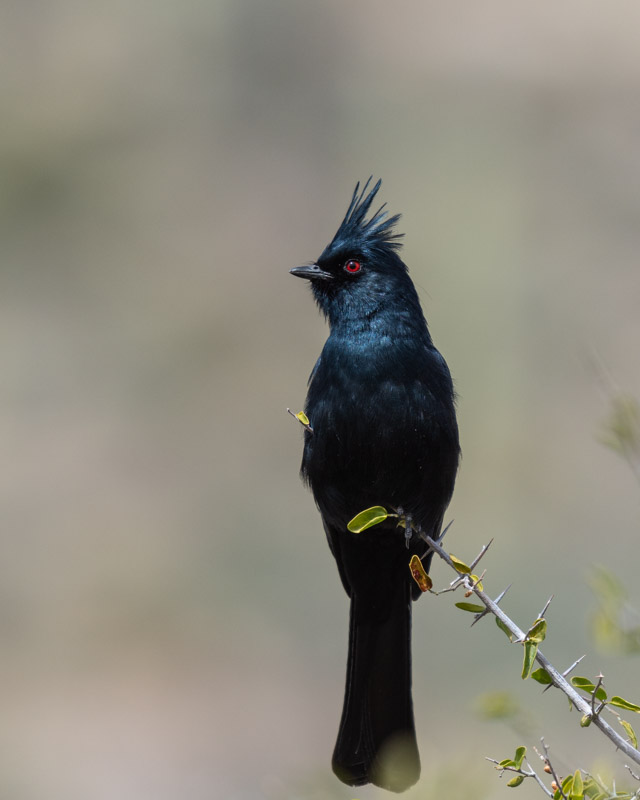By Dan Weisz
Here are a few of the desert birds I’ve been seeing lately:
Cactus Wrens have been busy building nests. Even though our weather has been unusual with “spring” days interspersed with cold and blustery winter-type days, the Cactus Wrens are ready for the season- it’s time to build nests again!
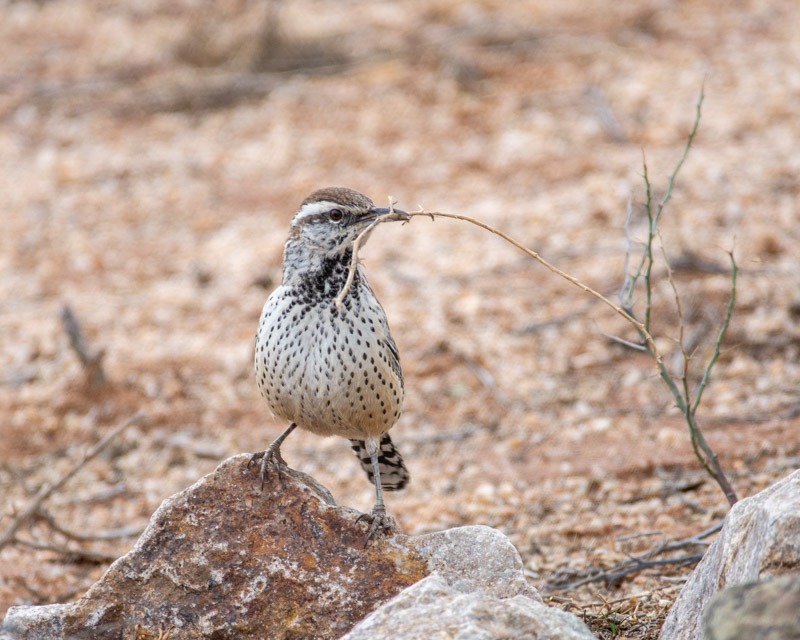
Cactus Wrens live in tough neighborhoods, building nests inside of cholla cactus.
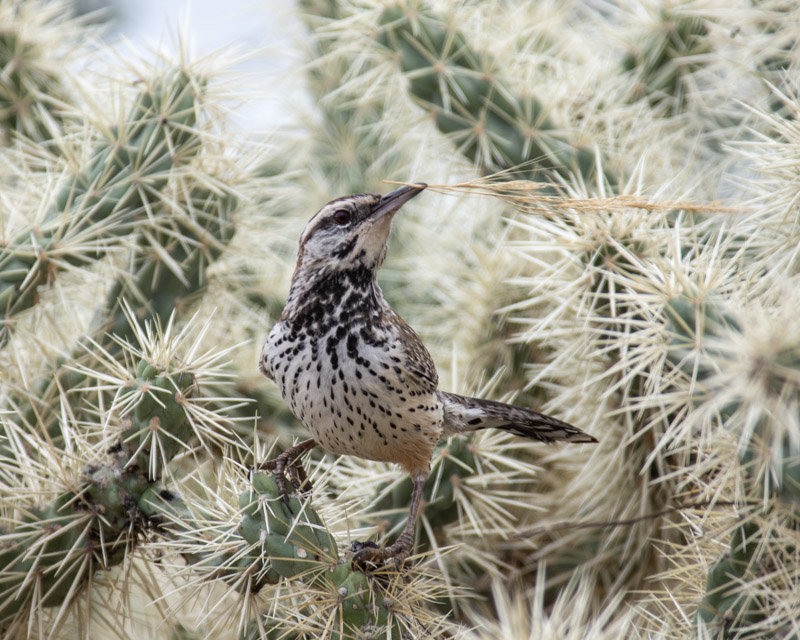
He’s looking at me while I’m looking at him.
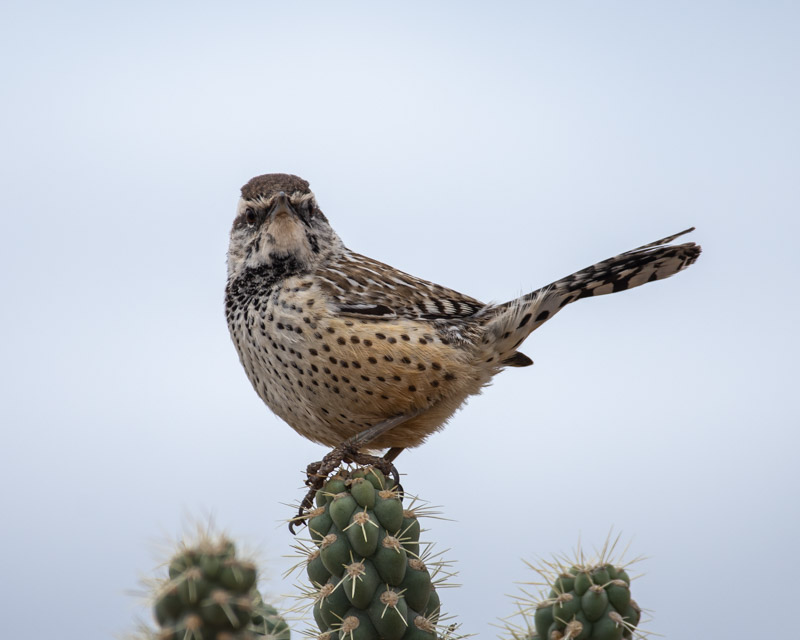
A Northern Rough-winged Swallow lets us know spring has arrived. These swallows are much more common over water in our area during the summer seasons.
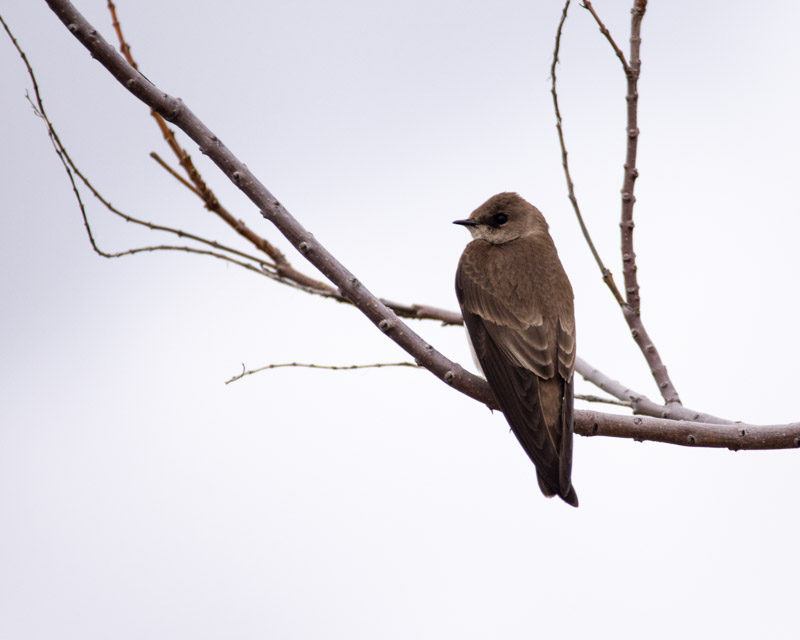
Cedar Waxwings arrive in southern Arizona during the winter, feeding on berries in the trees (mistletoe and pyracantha). I haven’t seen them in the Foothills with the exception of during the spring when they begin their migration to fly back up north. For some reason, I’ve seen a flock every spring but just for one day. To me, these birds look like they are made out of porcelain.
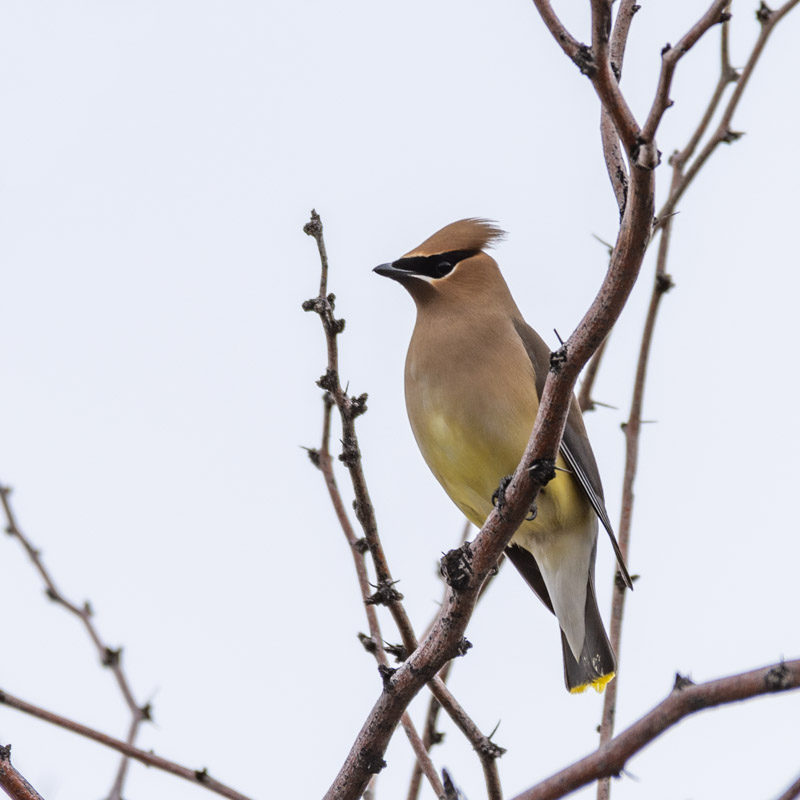
Pyrrhuloxia are desert specialists. This bird has a mouthful of new mistletoe berries while standing on cholla cactus.
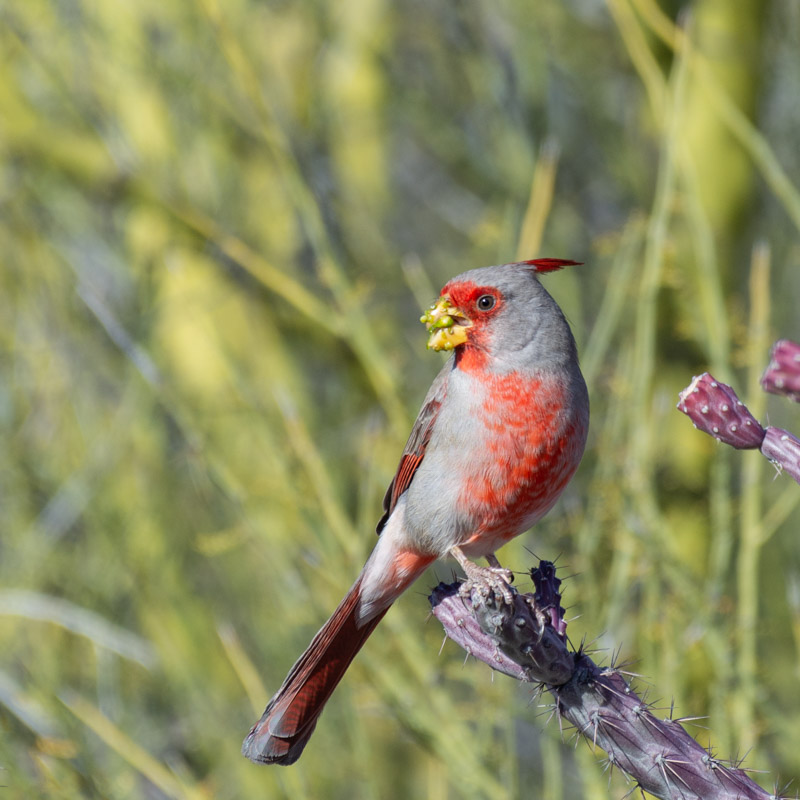
Here is the same bird a few minutes later and still with a beak covered in mistletoe berries but he is perched atop a mesquite tree.
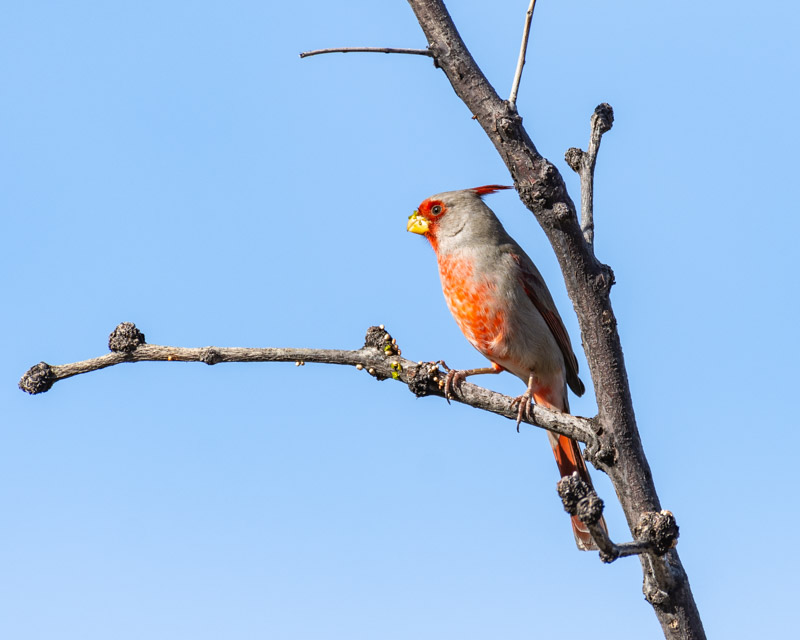
It is springtime, so male Pyrrhuloxia spend many mornings calling nonstop to establish and maintain territory.
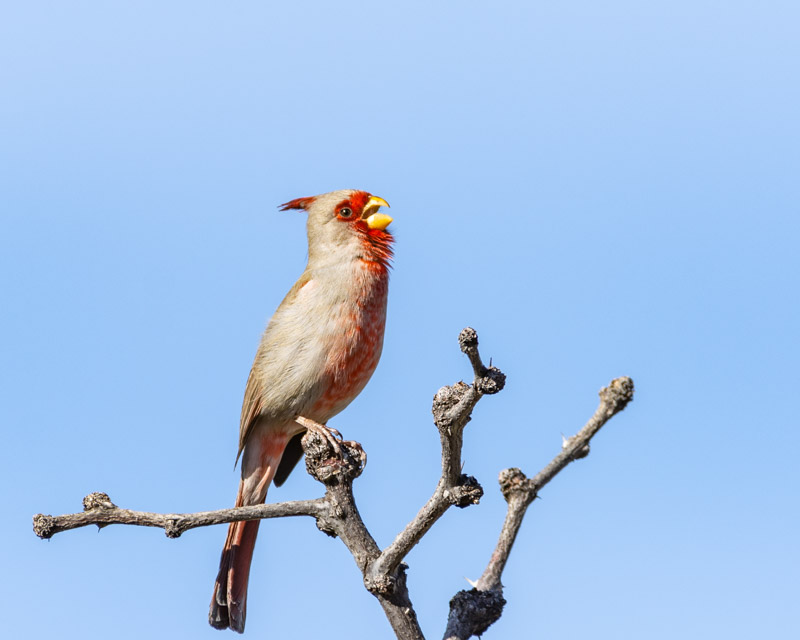
Here is a female Phainopepla, another desert specialist that looks similar to cardinals. The females are gray, but have that unmistakeable crest and a red eye. She is sitting in a desert hackberry tree.
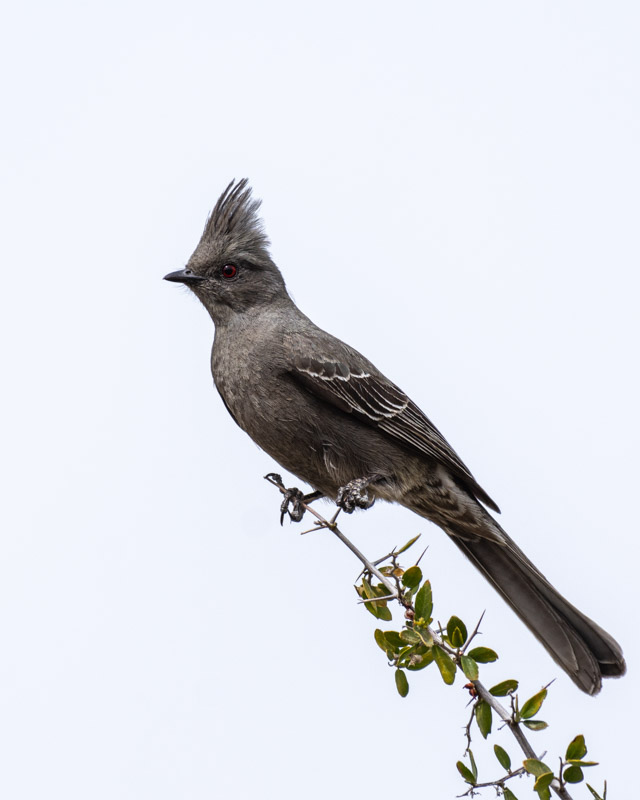
Phainopepla are in Tucson year round. They eat berries and specialize in Mistletoe berries. During the heat of Tucson summers, they move into higher elevations. So they don’t really migrate, they just move up to their summer cabins. During the winters, Phainopepla are very territorial and actively defend their nesting and foraging site. In the summers when they live in woodlands, they are colonial birds and share their territories.
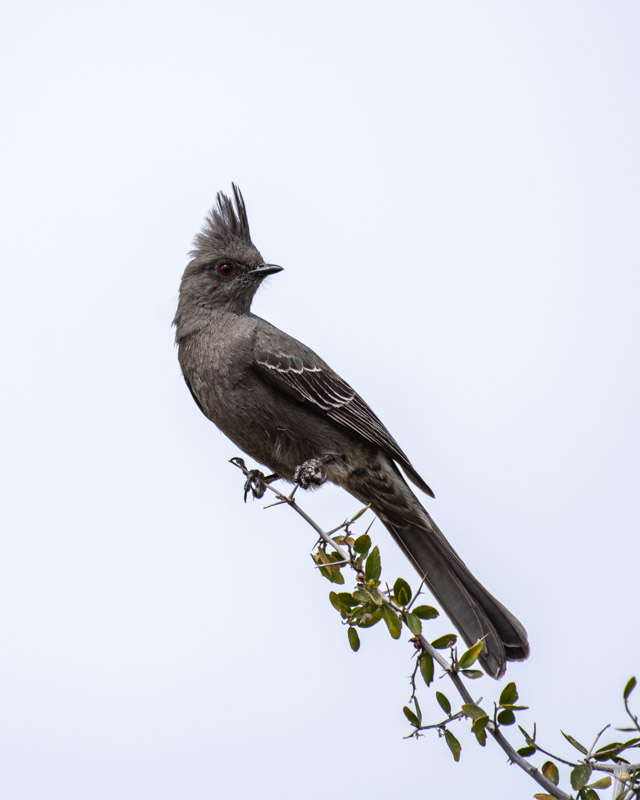
A male Phainopepla sitting in a different desert hackberry. This bird’s name- Phainopepla (pronounced fay-no-PEP-la)- comes from the Greek for “shining robe”.
